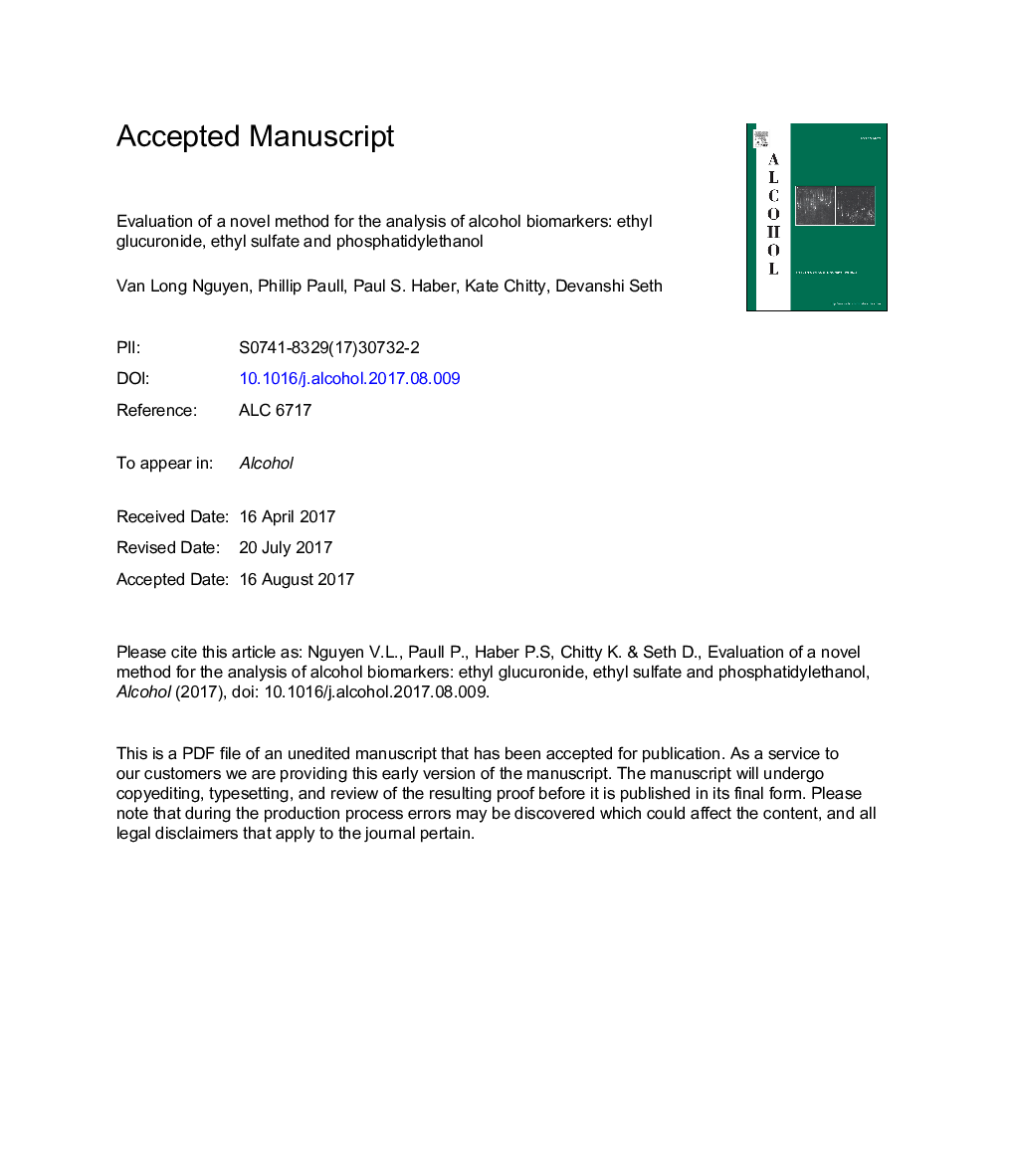| Article ID | Journal | Published Year | Pages | File Type |
|---|---|---|---|---|
| 7501481 | Alcohol | 2018 | 35 Pages |
Abstract
Currently available markers and methods to evaluate alcohol consumption are indirect and suboptimal, or rely on self-report, which have inherent problems. Direct metabolites of alcohol, phosphatidylethanol (PEth), ethyl sulfate (EtS), and ethyl glucuronide (EtG), are known to improve diagnostic accuracy. In this study, methods were established for the identification of PEth in erythrocytes and EtG and EtS in serum using ultra-high performance liquid chromatography-tandem mass spectrometry (UHPLC-MS/MS). The three biomarkers were tested and validated in volunteer teetotalers (n = 4) and drinkers (n = 10), and applied in patients (n = 8) hospitalized with alcohol-related problems. Linearity of each assay was demonstrated from 22.5 to 900 nM for EtG, 40-3175 nM for EtS, and 21-750 nM for PEth. The methods were highly selective, precise (<5% coefficient of variation), and had optimal accuracy (within 10% of the nominal value) for all three analytes. Recovery for all three compounds exceeded 90%. A preliminary investigation into the window of detection of these biomarkers after a single occasion of moderate alcohol consumption revealed that EtG and EtS could be detected and quantified over the short term (days) and PEth over the long term (weeks). All three biomarkers showed high sensitivity and specificity in distinguishing between abstinence and any alcohol use at the cut-off values of 22.5 nM for EtG, 40 nM for EtS, and 21 nM for PEth. We have established simultaneous assays for EtG, EtS, and PEth for routine clinical use in confirming abstinence and exposure, and detecting under-reporting of alcohol use, relevant in clinical and non-clinical settings.
Keywords
Related Topics
Life Sciences
Biochemistry, Genetics and Molecular Biology
Biochemistry
Authors
Van Long Nguyen, Phillip Paull, Paul S. Haber, Kate Chitty, Devanshi Seth,
